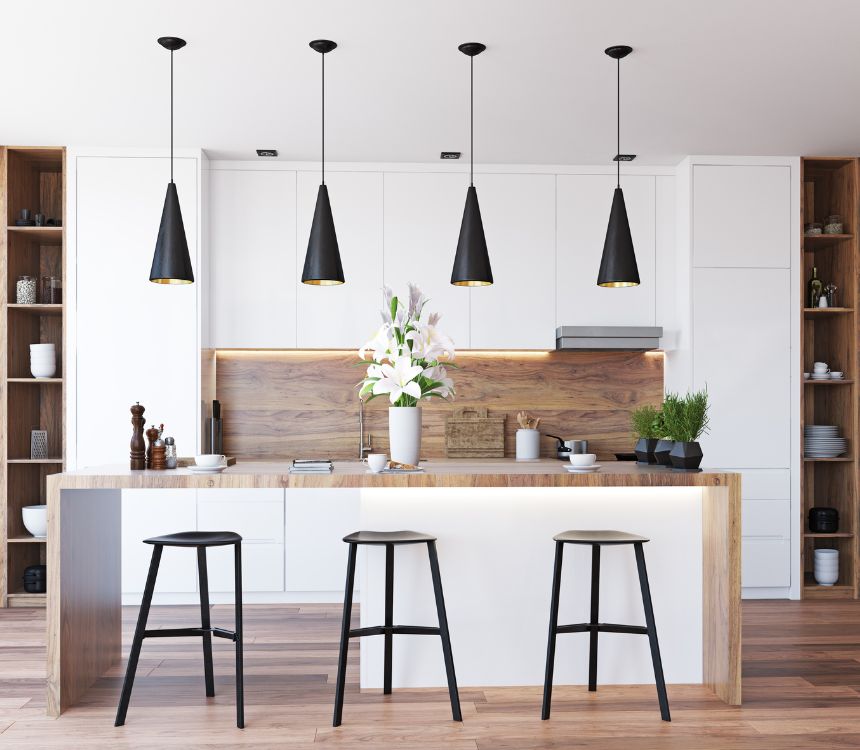If you’re a landlord in the UK considering setting up a House in Multiple Occupation (HMO), it’s essential to understand the specific requirements for your property’s kitchen. An HMO kitchen must be equipped to safely and efficiently accommodate the needs of multiple tenants, and it needs to meet legal standards to avoid penalties and ensure a safe environment for all residents. This guide will walk you through the essential requirements for an HMO kitchen in the UK.

Why Are HMO Kitchen Requirements Important?
The HMO kitchen is a high-traffic area and a critical part of shared living arrangements, especially when multiple tenants use it daily. With several people preparing food and using appliances, the risks associated with fire, hygiene, and general wear and tear are significantly higher. Meeting HMO kitchen standards helps ensure tenant safety, prevent accidents, and keep your property compliant with local council regulations.
Get The HMO Certificates for Landlords
Looking for Reliable HMO Certification? Get Started with Our Expert Services!
Key Requirements for an HMO Kitchen
The exact requirements for an HMO kitchen can vary by council, so always check with your local authority. However, some general standards apply throughout the UK:
1. Adequate Cooking Facilities
The number of cooking facilities you need will depend on the number of tenants:
- Up to 5 people: One full-sized oven, a four-ring hob, and a grill.
- 6 to 10 people: Two ovens, two four-ring hobs, and two grills.
- More than 10 people: Additional facilities may be required, depending on your local authority’s specific guidelines.
Each cooking appliance must be safe, easy to access, and maintained regularly.
2. Sufficient Storage Space
Each tenant must have access to adequate dry storage space for their food:
- Individual Cupboards: Assign a lockable cupboard for each tenant to store non-perishable items.
- Refrigerator and Freezer Space: For up to 5 tenants, you should provide one standard-sized fridge-freezer. For 6-10 people, consider adding an additional fridge-freezer.
Having sufficient storage space keeps the kitchen organised and helps reduce waste and contamination risks.
3. Washing Facilities
It’s crucial to provide enough washing facilities for dishes and utensils:
- Sink Requirements: For up to 5 people, one sink with drainer space is adequate. For 6 to 10 people, you’ll need an additional sink or a commercial dishwasher.
- Hot and Cold Water Supply: Each sink should have a constant supply of both hot and cold water to ensure proper hygiene.
4. Ventilation
Adequate ventilation is essential to prevent moisture build-up, which can lead to dampness, mould, and poor air quality. Install an extractor fan or ensure there’s natural ventilation in the form of a window that can open. This is especially crucial for kitchens with multiple stoves and high foot traffic.
5. Fire Safety Measures
HMO properties must meet specific fire safety standards, and the kitchen is no exception:
- Fire Blankets and Extinguishers: Each kitchen should be equipped with a fire blanket and a fire extinguisher.
- Heat Detectors: Unlike smoke detectors, heat detectors are more appropriate for kitchens and must be installed.
- Clear Escape Routes: Ensure the kitchen layout provides a clear path to an exit in case of emergencies.
Regular checks and maintenance of these safety measures are essential, and all tenants should be informed of how to use the fire safety equipment.
6. Adequate Worktop Space
Each tenant needs enough space to prepare food comfortably:
Worktop Space Requirement: As a rule of thumb, provide at least 500mm of worktop space per tenant.
Quality and Durability: Worktops should be made of durable materials that are easy to clean and can withstand regular use.
Ample worktop space can help prevent overcrowding and make food preparation safer and more efficient.
7. Lighting
Proper lighting is essential for safety and convenience. Ensure both general and task lighting in the kitchen:
General Lighting: Ceiling lights should provide enough illumination for the whole kitchen area.
Task Lighting: Additional lights under cupboards or over worktops can improve visibility for food preparation and cooking.
Energy-efficient LED lights are a great choice, providing bright light while helping reduce energy costs.
8. Bins and Waste Disposal
Given the volume of waste generated in an HMO, proper waste management is essential:
Separate Bins: Provide separate bins for general waste and recycling.
Regular Collection: Schedule frequent waste collection or disposal to prevent overflowing bins, which can attract pests and create unpleasant odours.
9. Accessibility and Layout
The kitchen should be spacious and have an ergonomic layout to accommodate multiple users:
Space Planning: Ensure there is enough room for tenants to move around safely.
Appliance Placement: Keep appliances like the fridge, sink, and stove inaccessible areas to allow simultaneous use.
Some councils may also require specific width and layout measurements to ensure a safe, accessible environment.
HMO Landlord Certificates:
Regular Inspections and Maintenance
Meeting the requirements for an HMO kitchen is just the start. Regular inspections and maintenance are essential to keep the kitchen compliant and safe. Document your inspections, noting any repairs or updates needed, and promptly address tenant-reported issues.
Conclusion: A Well-Equipped Kitchen is Key to a Compliant HMO
Creating an HMO kitchen that meets UK standards can be straightforward, with a clear understanding of the requirements. A compliant kitchen safeguards your tenants, reduces risks, and helps protect your investment. Remember to check with your local council for specific requirements, as they may have additional guidelines or restrictions. By investing in a safe, efficient, and compliant kitchen, you’re setting your HMO property up for long-term success and tenant satisfaction.
Further Reading